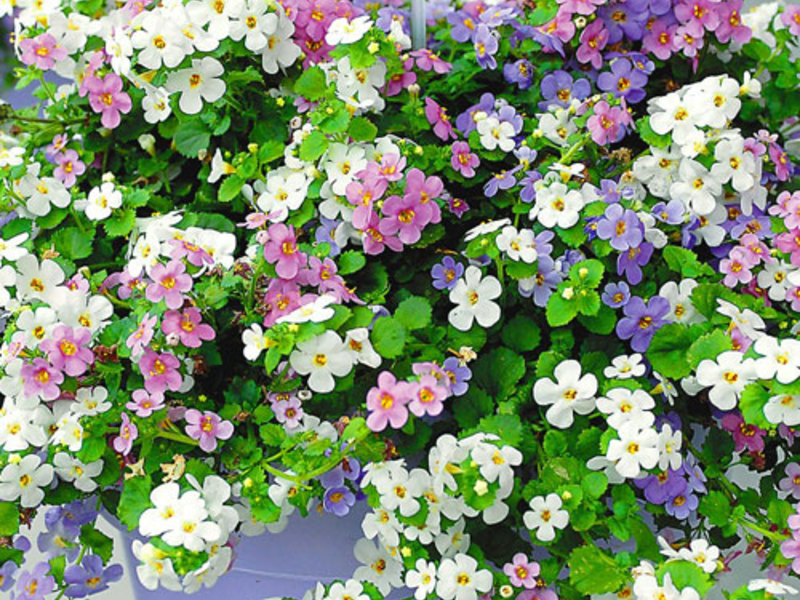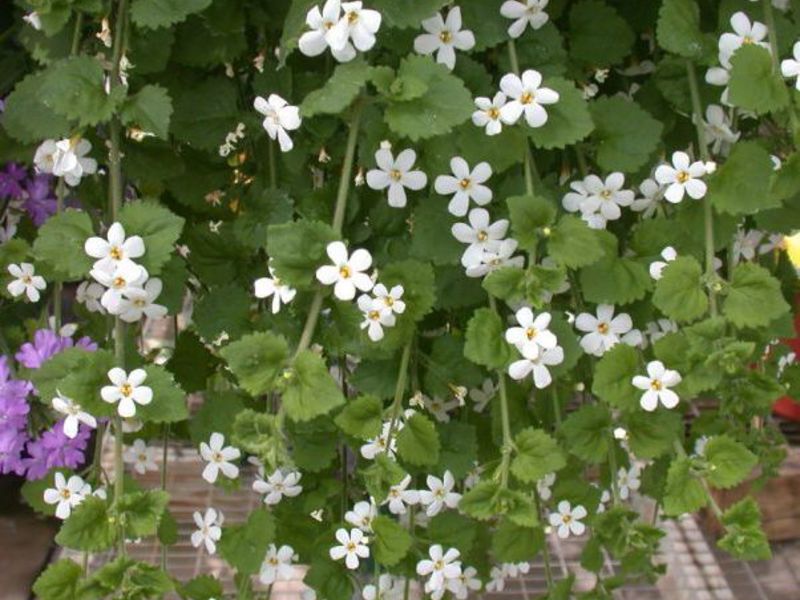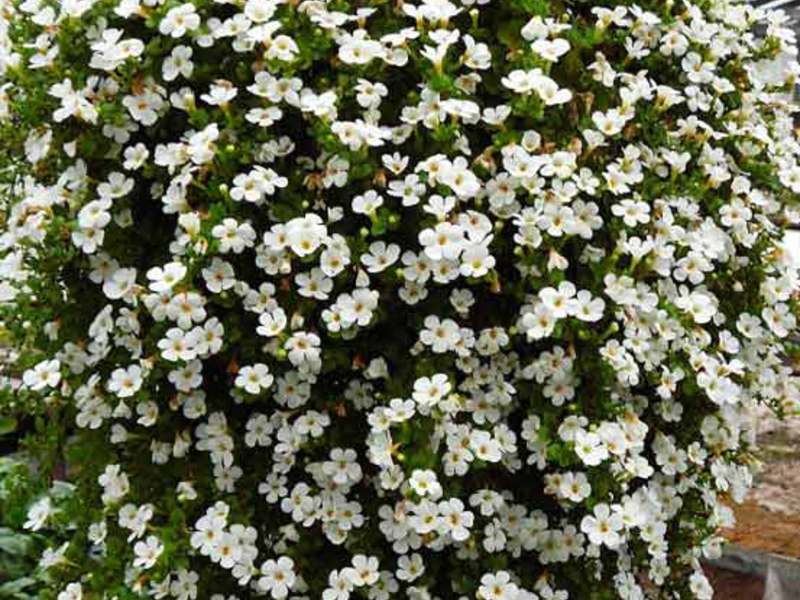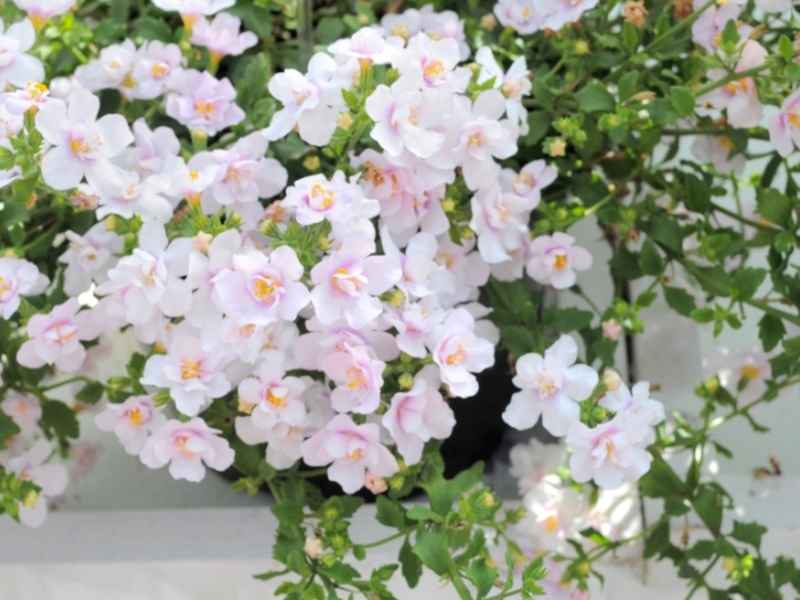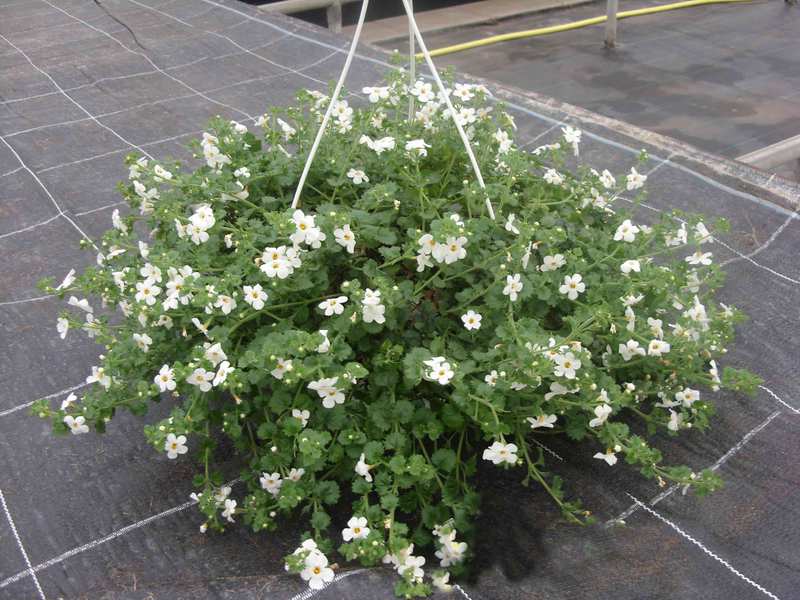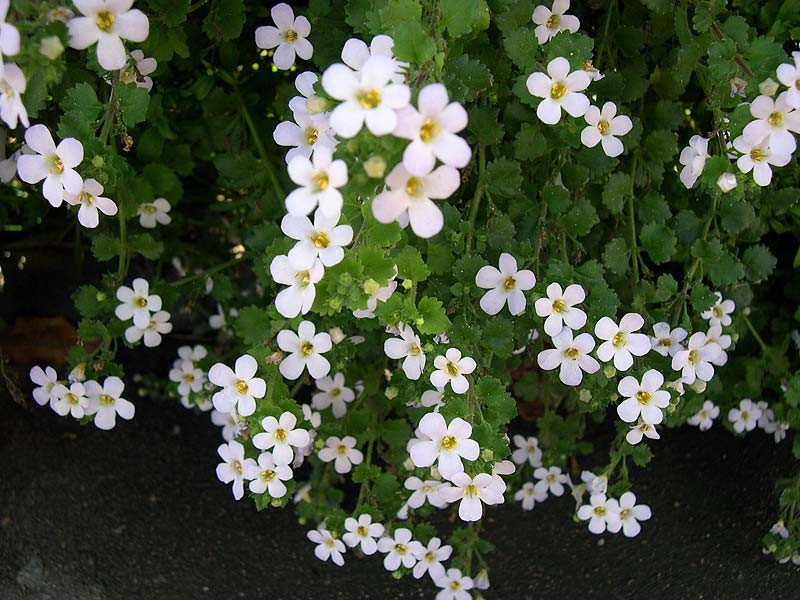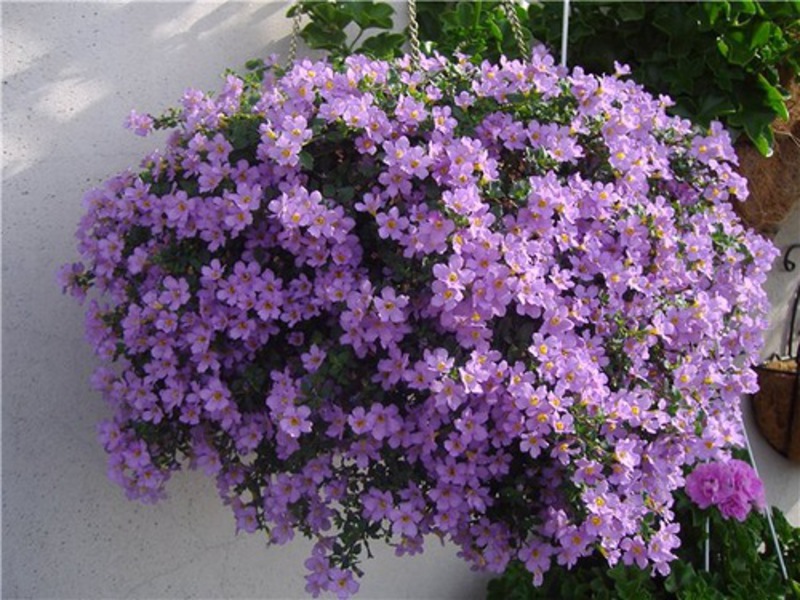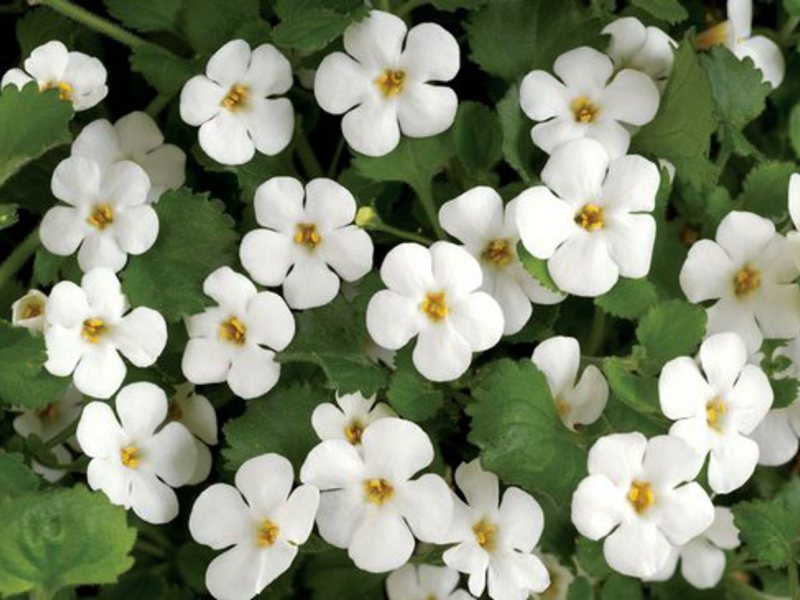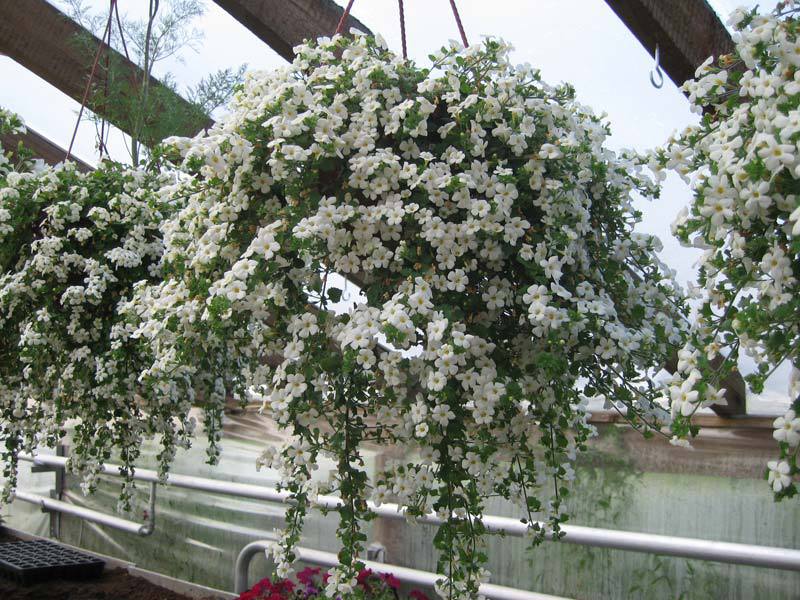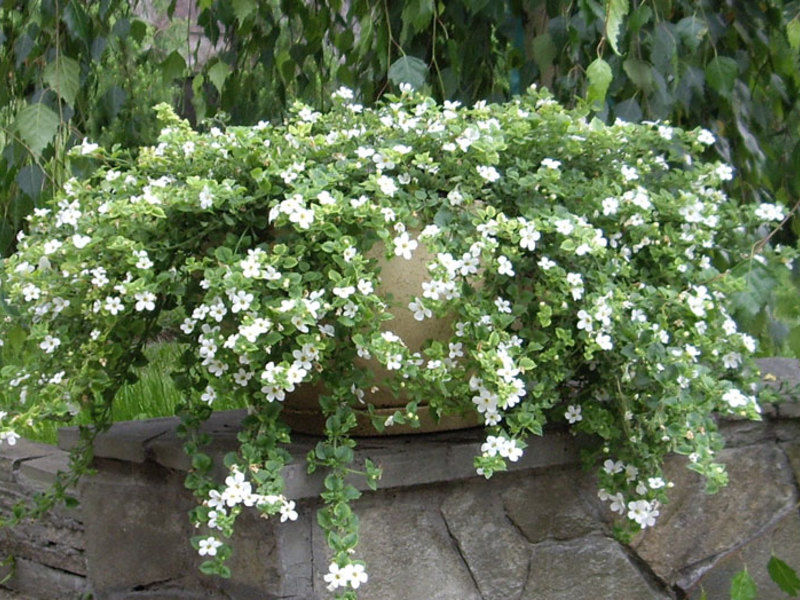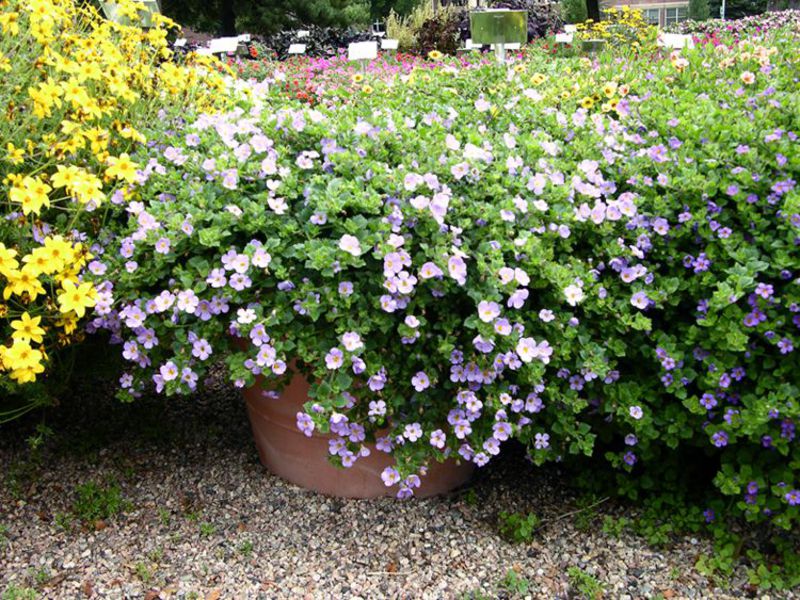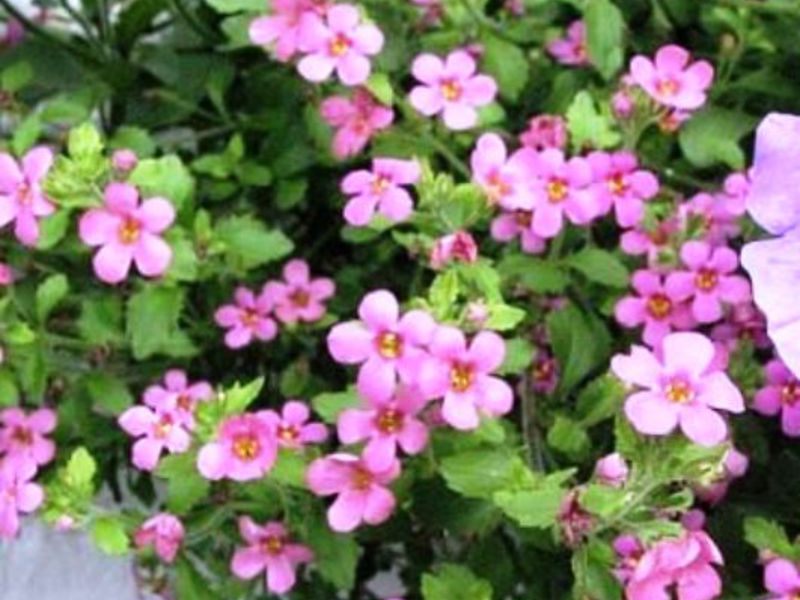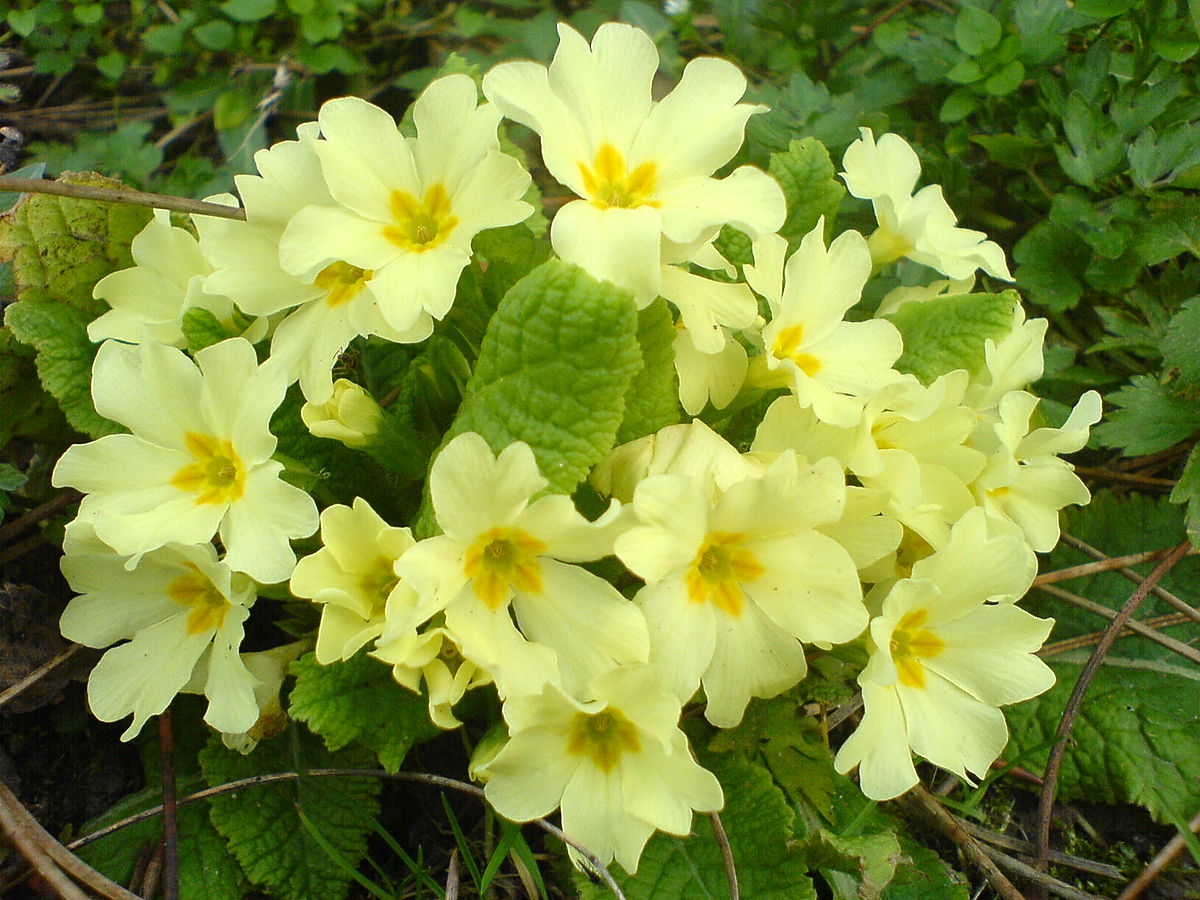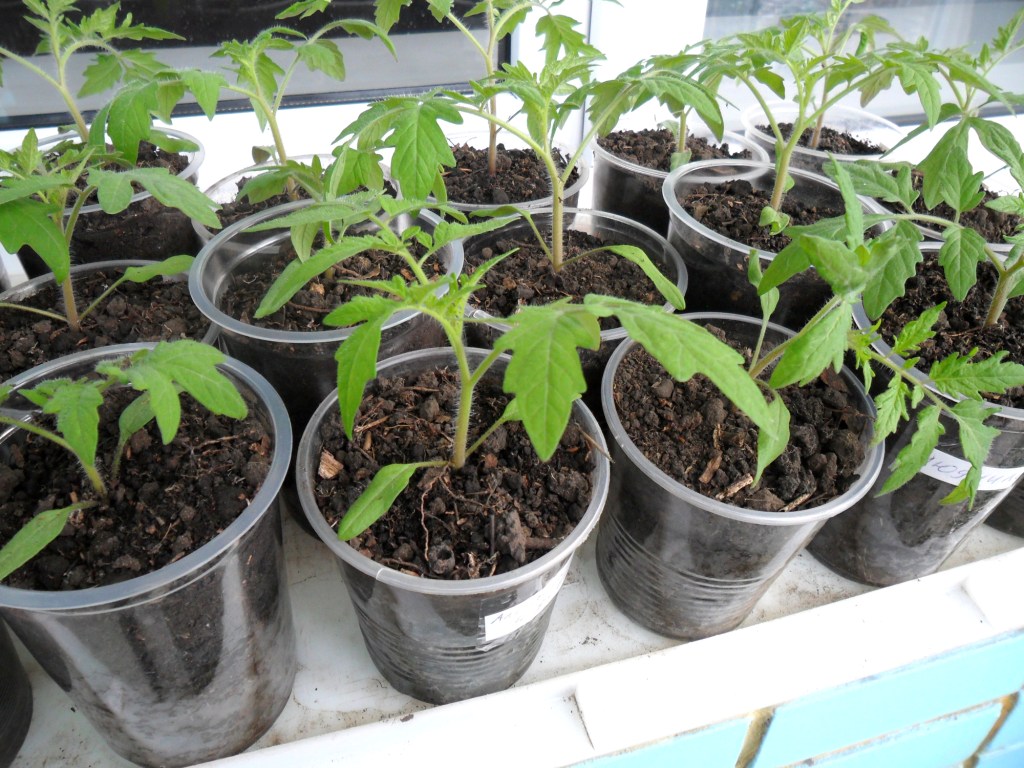In an effort to decorate their living space, many growers often cultivate ampelous plants. These flowers are quite unpretentious, because they feel fine both indoors and in a glass loggia, some varieties can also grow on open balconies. European flower lovers have known about Bacopa for a long time. In recent years, many of our compatriots have also met with this plant.
Content
Bacopa: plant features and types
At the first acquaintance with Bacopa, it is unlikely that a person will appreciate its attractiveness. Although it looks magnificent, the flowers are very small, so there is no need to talk about originality. But nevertheless, it is not worth discounting it, given that in European countries this plant is the main decoration of the facades of houses... Perhaps it's all about its simplicity, thanks to which its bushes easily fill large spaces without overloading the site. For this flower, you can use a variety of placement options: it can be installed in a planter, fixed to the ceiling, and also decorate flat surfaces with it, which allows them to give them the appearance of a dense carpet.
Bacopa carolina
 In the genus Bacopa, there are also varieties that can grow well in water. A striking example of this is Bacopa Caroline... The habitats for her are the reservoirs of the southern part of America. Therefore, having penetrated the European continent, it began to be used as a design for artificial lakes and ponds, which are often arranged in summer cottages or next to a house. It can often be found in aquariums.
In the genus Bacopa, there are also varieties that can grow well in water. A striking example of this is Bacopa Caroline... The habitats for her are the reservoirs of the southern part of America. Therefore, having penetrated the European continent, it began to be used as a design for artificial lakes and ponds, which are often arranged in summer cottages or next to a house. It can often be found in aquariums.
- from the features of this flower, it is worth highlighting the rather compact oval-shaped leaves, which are located on a long stem opposite each other;
- for inflorescences there is a place between the leaves, and they themselves are concentrated at the top;
- petals are blue or lilac in color, some species are decorated in a white shade.
Under artificial conditions, Caroline Bacopa must be grown in a reservoir whose depth should be at least 30-35 cm. It is also important to maintain a favorable temperature regime, which should be 20-22 degrees. In cooler conditions, it begins to grow extremely slowly, and in some cases there is a danger of its decay. In addition, you need to monitor the hardness of the water, which should be 7-8 degrees. The optimum acid-base balance is 7. Karolinska Bacopa feels good even without fertilization. She especially demanding on lightingwhich improves its decorative properties.
They talk about other types of bacopa that are grown on land, it is worth noting their shoot length, which is 60-65 cm. They are decorated with small lanceolate leaves that have a muted green color. These signs do not apply to columnar bacopa, which has an erect stem and is distinguished by its short stature. Therefore, it is not so often found in gardens and apartments.
In any place where the shoots of bacopa come into contact with the ground, new roots begin to form, so it develops well, regardless of the structure and fertility of the soil. Because of this, wire mesh walls are often used during cultivation to obtain hedges from it. Nondescript bakopa flowers have a diameter of 2-2.5 cm. They are formed by blue, blue, purple or pinkish-white petals that do not emit a characteristic odor.
Bacopa ampelous: growing from seeds
Usually, to obtain new plants, bacopa use the seed sowing method, which can be carried out at any time. The only exceptions are situations when in the future it is planned to plant them in open ground. If the gardener intends to grow this plant in an apartment throughout the entire time, then sowing can be carried out without taking into account weather conditions. Although there are times when you have to be patient to wait for the first flowers to appear.
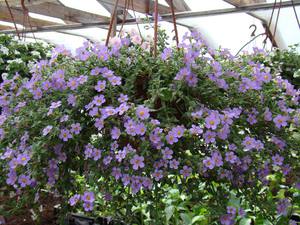 Bacopa usually blooms in March, so when sowing seeds a month earlier, there is not enough time for the seedlings to grow by this time. Therefore, the flowering stage does not begin until mid-summer;
Bacopa usually blooms in March, so when sowing seeds a month earlier, there is not enough time for the seedlings to grow by this time. Therefore, the flowering stage does not begin until mid-summer;- The growing season of bacopa is quite long and lasts until the end of October. Most often, it takes place in two stages, the latter being the most intense.
When choosing seeds for growing bacopa at home, it does not hurt to first find out how persistent the color of the plant is. After all, it is possible that 2-3 years will pass, and Bacopa will no longer please you with the color of the sunset, which will be replaced by a boiling white hue. However, this usually only happens when you are going to grow plants for a long time.
How to grow bacopa from seeds?
The method of growing bacopa by direct planting into the ground is not acceptable. Before need to get seedlings, which is subsequently transplanted to a permanent place.
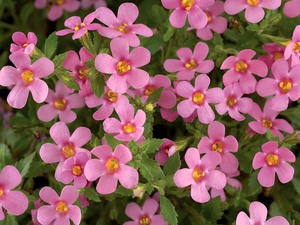 it is better to grow bacopa in spacious pots with high walls. Before sowing, the seeds must be prepared: for this they are laid on a cloth, which is well twisted and placed in a weak solution of potassium permanganate for 15-20 minutes;
it is better to grow bacopa in spacious pots with high walls. Before sowing, the seeds must be prepared: for this they are laid on a cloth, which is well twisted and placed in a weak solution of potassium permanganate for 15-20 minutes;- since the seeds of the plant are very small, they can only be kept in water in large quantities;
- you need to be especially careful when choosing a soil mixture: it must have a structure that prevents waterlogging. This can be very dangerous for ampelous bacopa, which has very fragile roots prone to decay. In this regard, it will be more correct to first lay the drainage material on the bottom of the pot, use a mixture based on peat, sand and garden soil with weak acidity as a planting substrate;
- during sowing, the seeds must be carefully spread over the substrate and slightly pressed down. It is not necessary to cover them with a soil layer on top;
- after sowing, watering is carried out by spraying with warm water. Next, glass is installed on top of the pot, the pot itself is transferred to a room where the container with plantings will be protected from direct sunlight and drafts.
Seeds begin to germinate by the end of the second week. Until this happens, it is necessary protect them from direct sunlight... At the first signs of calcination of the sprouts, the pot must be moved closer to the light. From this moment, they begin to water more often. First of all, the need for moisture increases when you find a pot with plantings on the south side.
A comfortable temperature for bacopa seedlings is 18-20 degrees. You can think about transplanting into separate containers only after the plants have formed two or three leaves. It is also necessary to monitor the temperature of the ambient air: if it is already warm enough, then you can transplant seedlings into open ground.However, first it is necessary to harden for 7-10 days so that the seedlings are better adapted to natural conditions. When placing a plant in a permanent place planted no closer than 10-25 cm from each other... However, in any case, the height of the plants must be taken into account.
Bacopa: planting and care
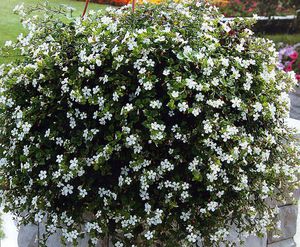 A photo of a plant can amaze many flower growers, but the desired effect can be achieved only with the use of the correct cultivation techniques. Bacopa is a rather “peaceful neighbor”, so it can be grown together with other plants. However, based on the experience of gardeners, it is recommended to place it with petunias, fuchsias and nasturtiums. This choice can be explained by the ideal compatibility in terms of appearance.
A photo of a plant can amaze many flower growers, but the desired effect can be achieved only with the use of the correct cultivation techniques. Bacopa is a rather “peaceful neighbor”, so it can be grown together with other plants. However, based on the experience of gardeners, it is recommended to place it with petunias, fuchsias and nasturtiums. This choice can be explained by the ideal compatibility in terms of appearance.
All flowers differ in miniature size, forming a single carpet, and do not stand out against the background, and also do not create shadows for each other. Therefore, each plant is provided with favorable conditions for development. Although Bacopa can be grown as a stand alone plant, this does not affect the decorative properties of the site.
Growing and caring for bacopa from seeds is a task that any gardener can do, regardless of experience. Regarding the ampelous bacopa, it should be noted that in the process of caring for it, pinching will have to be carried out, although, unlike other plants, it blooms in waves. As the first flowers wither, the new wave is often as intense as the previous one. Growth points on new shoots deserve attention here, which must be removed immediately if you do not want the bush to begin to grow in breadth.
Lighting and fertilization
Particular attention should be paid to lighting during the care process. This is very important for Bacopa, as growing in a sunny area will allow it to bloom profusely. If you plant it in a shady area, you will not achieve the same beauty. The effect of feeding is insignificant, so it makes sense to carry them out only for young plants in order to provide them with the necessary nutrients. Subsequently, fertilizers are applied during flowering.
With the approach of winter, mineral fertilizing is reduced and subsequently completely eliminated. Do the same with watering. Although Bacopa already feels comfortable without regular watering. The main thing is constantly control soil moisture level and, if necessary, watering. A more effective measure when caring for bacopa is spraying shoots and leaves, which is practiced by many gardeners. Indeed, in this case, you can maintain optimal air humidity in the growing area of the bush.
A constant supply of fresh air is essential for the normal development of bacopa. To do this, you need to regularly loosen the soil in the root zone. However, the depth of penetration should be minimal, otherwise you can touch the roots, which are located in the surface layer of the soil. If the bacopa is not planned to be grown as an annual, then in the fall it is dug up and transferred indoors. At this time of the year, it is necessary for it to maintain an air temperature of at least 14-15 degrees, although it can withstand lower values down to 0 degrees.
Conclusion
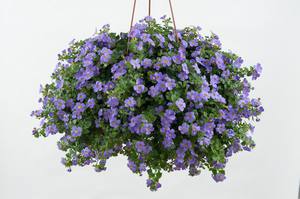 Seeing for the first time ampelous bakopa, many beginners and not only flower growers may consider it an undesirable plant. However, this would be a mistake, because it is no coincidence that this flower is used to decorate houses in Europe. Therefore, it is necessary for him to find a place on the site, because he has many opportunities to show all his originality.
Seeing for the first time ampelous bakopa, many beginners and not only flower growers may consider it an undesirable plant. However, this would be a mistake, because it is no coincidence that this flower is used to decorate houses in Europe. Therefore, it is necessary for him to find a place on the site, because he has many opportunities to show all his originality.
The main feature of Bacopa is that it adheres perfectly to any surface, so she easily manages to create beautiful "living" carpets that look great not only outdoors, but also indoors.It is quite simple to grow this flower, since during the care process it is not required to carry out top dressing, as well as regular watering.
